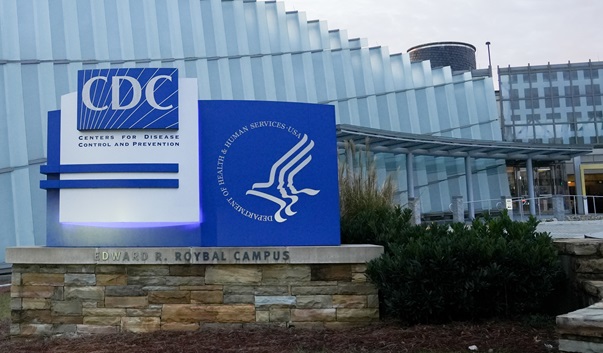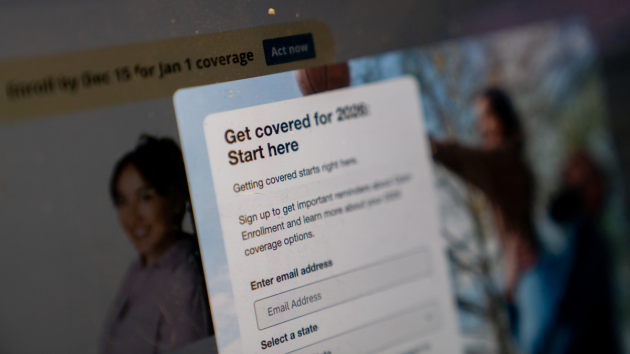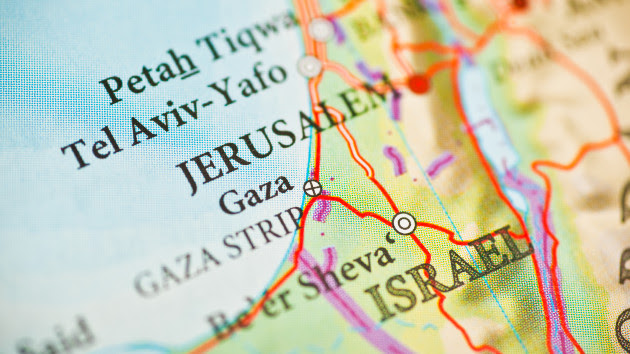Lifesaving AEDs are being increasingly mandated across states — but bystanders aren’t using them, study finds
Written by ABC Audio ALL RIGHTS RESERVED on January 10, 2024

(NEW YORK) — Bystander use of automated external defibrillators, or AEDs, for witnessed out-of-hospital cardiac arrests remains low despite legislative efforts to improve access to these life-saving devices at recreational facilities across the United States, according to a study recently published in the Journal of the American Medical Association.
Researchers at the University of Texas Southwestern Medical Center and the University of Missouri-Kansas City reviewed how frequently bystanders used AEDs in 9,290 cases of witnessed cardiac arrest at recreational facilities, based on data from the Cardiac Arrest Registry to Enhance Survival (CARES). They further compared the frequency of AED use among states with and without enacted laws requiring the presence of AEDs on site at recreational facilities.
Although 46.8% of patients with out-of-hospital cardiac arrest had shockable heart rhythms, bystander use of AEDs remained low across the country, with only 19% of bystanders using AEDs in AED-enacted law states, and 18.2% of bystanders using AEDs in non-law states, the JAMA study, published Jan. 2, found.
Low rates of “bystander use of AEDs could be due to several reasons, including lack of AED availability on-site,” “unawareness that an AED is available, or not knowing where it is located,” wrote Dr. Ahmed Kolkailah, corresponding author of the study, from the division of cardiology at the University of Texas Southwestern Medical Center. “Even if an AED is available, bystanders may not know how to use it or may be afraid of causing harm.”
Bystander cardiopulmonary resuscitation was only performed in 5,693 cases, or 61.3%, the study found. Additionally, rates for surviving an out-of-hospital cardiac arrest and making it to the hospital were similar for patients living in AED law states (44.5%) and non-law states (45.0%).
These findings emphasize the need to increase public awareness of the lifesaving measures AEDs can provide, and where they can be found.
“If CPR is not started within the first few minutes, brain function and survival decline by 10% for every minute without CPR. We need to educate people about CPR and AED use. The American Heart Association strongly advocates for CPR and AED training as a high school graduation requirement,” according to Dr. Dianne Atkins, a pediatric cardiologist and volunteer for the American Heart Association’s Emergency Cardiovascular Care Committee.
“AEDs placed in public areas need to be made very visible. Often AED signage is placed on the wall instead of perpendicular to the wall, so as you’re walking you can see it easily. AEDs need to be obvious and quickly found,” Atkins said. “I always look for an AED when I’m in a new building. Sometimes I’ll ask a receptionist or security guard where the AED is.”
“Cardiac arrest can happen to anyone at any time. CPR and AED use should be considered life skills for everyone,” wrote Dr. Steven Brooks, emergency medicine physician at Queen’s University in Kingston, Ontario, and lead author of an American Heart Association statement from the International Liaison Committee on Resuscitation published in 2022.
“Using an AED may seem intimidating, but it’s important to remember that all you have to do is power on the unit, and it will guide you through the steps to save a life with audio and visual prompts,” Brooks said. “Just do what the AED says and you could save a life.”
The first steps you can take to save a life involve watching this video from the American Heart Association on how to properly administer hands-only CPR, and be on the lookout for the nearest AED in public spaces.
Joey K. Ng, M.D., is an emergency medicine resident at Wyckoff Heights Medical Center in Brooklyn, New York, and a member of the ABC News Medical Unit.
Jennifer Miao, M.D., is a fellow physician in cardiology at Yale School of Medicine/Yale New Haven Hospital, and a member of the ABC News Medical Unit.
Copyright © 2024, ABC Audio. All rights reserved.
 KVSP
KVSP 




